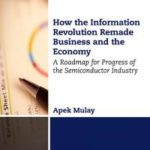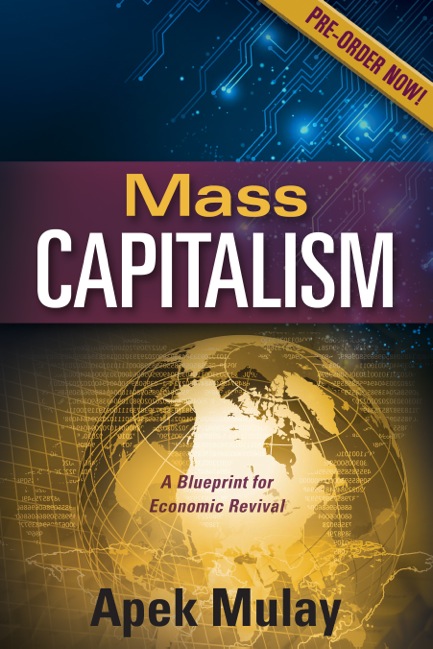In high-tech, we talk about innovation and disruptive technologies, but now it’s time to talk about what these really look like in the semiconductor industry.
The final chapter of a newly published book, Fabless: The Transformation of the Semiconductor Industry, written by author Daniel Nenni and contributor Paul McLellan, asked a handful of Semiwiki writers to weigh in on the future of the semiconductor industry. I read with interest, and wanted to respond to these leaders using the lens of macroeconomic principals of mass capitalism that I’ve been exploring.
Semiwiki blogger Erik Esteve believes that innovation has always been the driver for a highly dynamic, creative, and successful semiconductor industry. He hopes that industry actors will be wise and leave room for startups to emerge and innovation to flow. Such creativity would enable post-smartphone products of 2030 or later, keeping the semiconductor industry as dynamic and successful as it has been up to now, according to Esteve.
I would answer that a couple of things need to happen to support this vision. For robust growth of small startups, it is very important that US capitalism undergoes major reforms to a free market economy. Additionally, mergers and acquisitions form inefficient, large organizations and lead to layoffs when the two merging companies do not have complementary portfolios. Hence, antitrust laws have to be strictly enforced in order to ensure free markets and innovation and preserve the highly dynamic, creative, and successful semiconductor industry.
Another Semiwiki blogger, Daniel Payne, said that he hopes to see some new, disruptive nanotechnology emerge that would disrupt the status quo and incremental improvements. I believe that with good economic reforms and growth of startups, new technologies are sure to emerge that would disrupt the status quo and incremental improvements. A good economic system would solve, not just current, but also future problems of semiconductor industry.
Semiwiki blogger and author Paul McLellan is less optimistic. He predicts that the “semiconductor industry is entering an era where economics that have driven semiconductor for five decades may be coming to an end… On the other hand, something may change, or maybe this time it really is different.”
McLellan is correct in his analysis that today’s US economy cannot sustain Moore’s law anymore, and it is indeed coming to an end. During these five decades of progress of Moore’s law, free market capitalism has been transformed into monopoly capitalism. As long as economic reforms bring back those free markets, a brilliant future can be envisioned for the global semiconductor industry. If there is something that should change then it is the present form of US capitalism.
Finally, Semiwiki blogger and author of this volume Daniel Nenni weighs in himself, saying that the biggest challenge for the semiconductor industry to move forward is economic. Nenni believes the fabless semiconductor ecosystem will clear technical hurdles for physical limits. However, he says, we are under-estimating the increasing financial burden of modern semiconductor design and manufacturing. Nenni contends:
As our industry matures, consolidation comes knocking and doors of innovation start closing. Today less than 5% of the workforce is engineering and science based. If you really want to know what will finally kill Moore’s law, the answer is economics absolutely.
Nenni is correct that the increasing financial burden of modern semiconductor design and manufacturing is becoming too risky an investment for many businesses. He is also correct that very less workforce is involved in engineering and scientific advancements.
However, I believe that mass capitalism offers the only solution to these economic problems. This approach is the only one in which wages of employees catch up with their productivity, establishing a free market economy. This creates low inequality in the economy and robust growth of small businesses.
With a decentralized supply chain, individual entities in the supply chain prosper and there is more cooperation than competition. This kind of cooperation leads to collaboration among businesses. By focusing on growth of science, technology, engineering, and math (STEM) education, it is possible to increase the percentage of tomorrow’s workforce in these fields. Some forward thinking and planning would solve even the economic hurdles to progress of Moore’s law. In fact, the present physical and economic challenges to progress of Moore’s law are a boon in terms of helping bring about reforms in the global economy that will lead to progress for all human beings. It gives us an opportunity to make capitalism work for everyone.
Weigh in with your thoughts in the comments section below.


Recent Comments